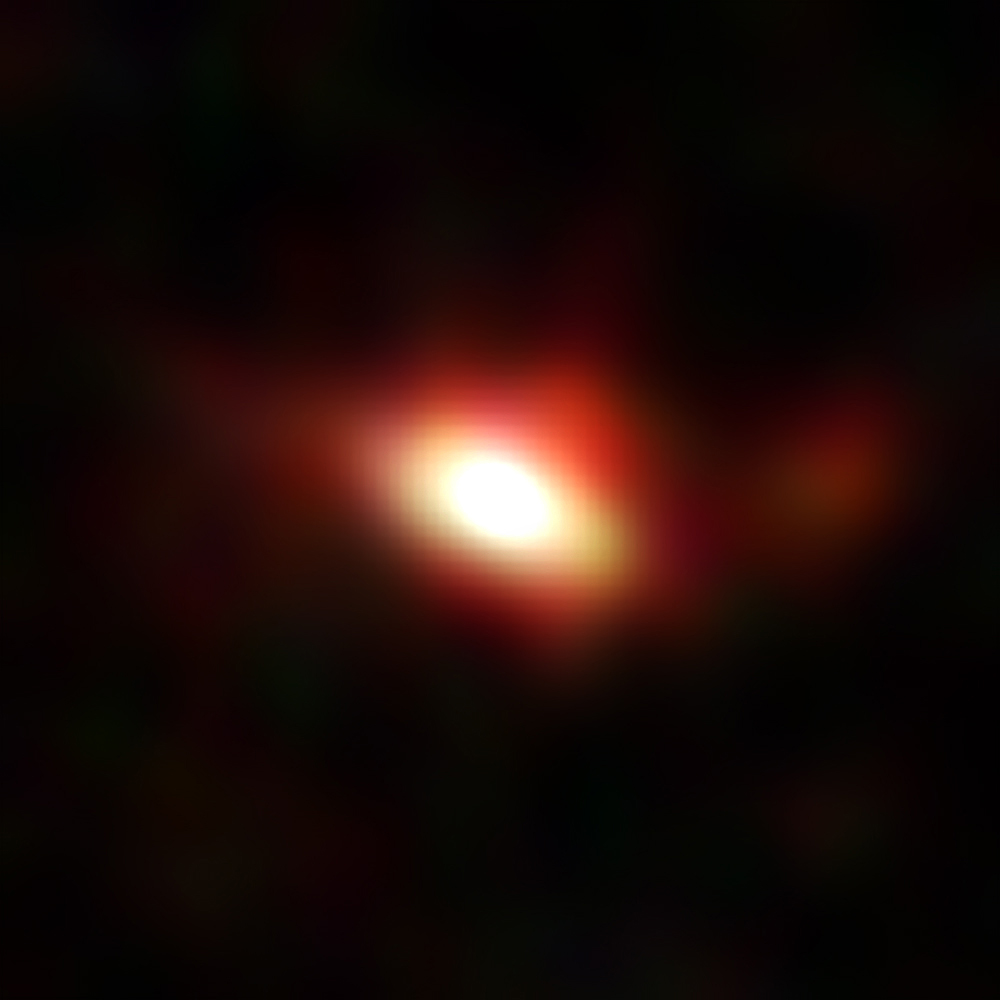| Basic Information | |
| What is this? | The star 61 Virginis, which is surrounded by a disk of dust material |
| Where is it in the sky? | In the constellation of Virgo |
| How big is it? | The debris disc stretches up to 100 times further from the star than the Earth is from the Sun |
| How far away is it? | Around 28 light years |
| What do the colours represent? | The redder material is cooler, while the yellow and white are warmer material closer to the star. |
Downloads
See this object in:
Herschel has discovered a vast dusty ring of material around the star 61 Virginis, which also contains two relatively small planets. The planets have masses of 5 and 18 times that of the Earth, making the largest similar in mass to Neptune. The quantity of dust present is much higher than in our Solar System, implying that the lack of a massive Jupiter-like planet allows such debris discs to survive more easily.
61 Virginis is very much like the Sun, with only a lightly lower mass and a similar age. The two known planets orbit the star much closer than any planet in our Solar System, and are both incredibly hot.

Although Herschel cannot see the central star directly, the images can still be used to deduce the structure of the system. The planets orbit within a quarter of the Earth-Sun distance (called an astronomical unit, or “AU”), but the debris disc extends from approximately 30 to 100 AU. In the image on the right, a sketch of the debris disc and planet orbits are shown, though it is not to scale – the planet orbits would actually be much, much smaller on this scale.
61 Virginis is one of around 60 nearby Sun-like stars observed by the DEBRIS Herschel observing programme, of which11 are known to be orbited by planets. Five have massive planets similar to Jupiter and show no evidence of debris discs. Of the other six stars, which are orbited by lower-mass planets, four (including 61 Virginis) have debris discs.
These new Herschel results hint at a link between the mass of the planets and the presence of a debris disc, indicating that the lack of high-mass planets allows the debris disc to survive more easily. For example, in our own Solar System it is thought that the gravitational interplay between Jupiter and Saturn disrupted the Kuiper Belt, a belt of small, icy bodies which lies beyond the orbit of Neptune. This disruption sent much of the material in towards the Sun and inner planets. This period, called the Great Heavy Bombardment, occurred more than 3 billion years ago and lasted for several million years.
The DEBRIS programme also observes much less massive stars, such as the M-type dwarf Gliese 581, which may also exhibit a similar relationship between the planet mass and presence of debris discs.

